The Cisco Certified Internetwork Expert (CCIE) Security certification represents the pinnacle of network security expertise, a credential that validates an individual’s ability to architect, deploy, and troubleshoot the most complex security solutions.1 Its 8-hour practical lab exam is notoriously difficult, with a reputation for demanding not just knowledge, but resilience and precision under extreme pressure.4 While many candidates require multiple attempts, a first-time pass is not a myth. It is an achievable goal, reserved for the exceptionally prepared candidate who approaches the challenge not as a test of knowledge, but as a strategic campaign.
To pass the CCIE Security v6.1 lab exam on the first attempt, a candidate must execute a multi-faceted strategy encompassing deep mastery of the official blueprint, thousands of hours of rigorous hands-on lab practice, meticulous time management for each module, and a resilient mindset focused on precision and systematic troubleshooting under pressure.6
This guide moves beyond simple study tips and checklists. It deconstructs the exam’s architecture, analyzes the lessons learned from both successful and unsuccessful attempts, and builds a strategic framework. This framework is designed to equip a candidate with the technical prowess, tactical execution, and mental fortitude required to walk out of the testing center having earned their CCIE number on day one.
Blog Claim: A first-attempt pass is not a matter of luck; it is the direct result of a disciplined, data-driven preparation process that transforms deep technical knowledge into speed, accuracy, and strategic problem-solving under the most demanding conditions.
Table of Contents
What Does the CCIE Security v6.1 Lab Exam Truly Demand?
Before an architect can design a winning strategy, they must first understand the battlefield. The CCIE Security lab exam is more than a list of technologies; it’s a carefully designed, 8-hour simulation of an expert’s lifecycle of responsibilities.1 This section deconstructs the exam’s structure, content blueprint, and scoring logic to reveal what it truly tests: not just what a candidate knows, but how they design, deploy, operate, and optimize under immense pressure.
The 8-hour CCIE Security v6.1 lab exam is split into a 3-hour “Design” module, which tests the ability to translate requirements into solutions without device access, and a 5-hour “Deploy, Operate, Optimize” (DOO) module, which requires hands-on implementation, troubleshooting, and optimization of a complex security topology.1
The exam’s structure is not arbitrary; it is a crucible deliberately engineered to assess a holistic set of expert-level competencies. The split-module format and the dual-condition pass requirement are designed to validate that a candidate can function as both a strategic architect and a tactical engineer, demonstrating proficiency across the entire security lifecycle.
Deconstructing the Two-Module Format
The exam is a marathon divided into two distinct sprints, each with its own rules and required mindset.1
- Module 1: Design (3 Hours): This module is purely scenario-based and tests a candidate’s ability to think like a security architect. Candidates are presented with a variety of documentation, such as email threads, high-level design documents, network topology diagrams, and specific customer requirements and restrictions.4 The task is to answer a series of web-based items, which may include drag-and-drop questions, multiple-choice answers, or dropdown selections, to formulate a coherent design. Two constraints make this module uniquely challenging: there is
no device access, and backward navigation is disabled.4 This means every decision is final and must be made based on analytical skill and interpretation of the provided materials, simulating the real-world pressure of making architectural choices with consequential outcomes. - Module 2: Deploy, Operate & Optimize (DOO) (5 Hours): This is the hands-on portion of the exam where theory meets practice. Candidates are given access to a virtualized lab environment and are tasked with building the network, troubleshooting pre-existing issues, and optimizing the security solutions according to the design specifications.4 This module is a rigorous test of command-line fluency, systematic troubleshooting methodology, and the ability to manage a complex, integrated configuration across a wide range of platforms, including Cisco ASA, Firepower Threat Defense (FTD), Identity Services Engine (ISE), and more.13
The Scoring System Explained
Passing the CCIE lab is not as simple as achieving a single percentage score. A candidate must satisfy two distinct conditions to be successful: they must score higher than the minimum score for each module individually, AND they must score higher than the aggregated pass score of both modules combined.4
This scoring logic is critical. It prevents a candidate who is exceptionally strong in hands-on configuration but weak in design principles (or vice versa) from passing. A failure to meet the minimum threshold on even one module results in an overall exam failure, regardless of how well the other module was completed. This system enforces the need for a balanced, expert-level performance across the board, validating that a certified individual is competent throughout the entire network lifecycle, from planning to execution.
The Official Blueprint as Your Map
The single most important document for any candidate is the official exam blueprint.10 It is the definitive source of truth for all testable content. The CCIE Security v6.1 blueprint is divided into five weighted domains, which provide a clear guide for allocating study time and effort. Cisco periodically issues minor revisions to keep the exam relevant; the transition from v6.0 to v6.1, for instance, introduced topics such as cloud security with Cisco Umbrella, the use of dynamic objects, and Cisco Identity-Based Networking Services (IBNS) 2.0, reflecting the security industry’s ongoing evolution toward cloud and identity-centric solutions.15
Table 1: CCIE Security v6.1 Lab Exam Blueprint Overview
| Domain | Weight | Key Technologies & Concepts (Examples) | Source References |
| 1.0 Perimeter Security and Intrusion Prevention | 20% | Cisco ASA & FTD (Deployment Modes, NAT, Policy), NGIPS, FMC Features (Alerting, Reporting), Zone-Based Firewall (ZBF) | 13 |
| 2.0 Secure Connectivity and Segmentation | 20% | VPNs (AnyConnect, DMVPN, FlexVPN, IPsec), Infrastructure Segmentation (VLAN, VRF-Lite), Microsegmentation (TrustSec) | 13 |
| 3.0 Infrastructure Security | 15% | Device Hardening (CoPP, Control/Management/Data Plane Protection), Layer 2 Security (DAI, DHCP Snooping), Monitoring (NetFlow, SYSLOG), Automation (Python, REST APIs, JSON/XML) | 13 |
| 4.0 Identity Management, Information Exchange, and Access Control | 25% | Cisco ISE (Scalability, Personas, 802.1X, MAB), AAA, BYOD, Posture Assessment, pxGrid Integration, Cisco DUO (MFA) | 13 |
| 5.0 Advanced Threat Protection and Content Security | 20% | Cisco AMP (for Networks, Endpoints), Malware Analysis, Packet Capture (Wireshark), Cloud Security (Cisco Umbrella), Email/Web Security (ESA/WSA) | 13 |
The exam is a meticulously designed crucible that validates an individual’s ability to perform as a senior security expert across the entire network lifecycle, from planning and design to hands-on implementation and optimization.
How Should You Architect Your Unyielding Preparation Strategy?
A first-attempt pass is not the result of a few weeks of cramming; it is the culmination of a deliberate, long-term campaign. Success begins months, if not years, before exam day.7 A winning strategy requires a meticulously planned study regimen, a curated arsenal of high-quality resources, and a purpose-built lab environment that forges skill, speed, and confidence.
A successful preparation strategy involves a structured study plan allocating over 1,000-1,500 hours to theory and hands-on practice, prioritizing official Cisco documentation and reputable training materials over unreliable “dumps,” and building a versatile lab environment (virtual or physical) that mirrors the real exam’s complexity and software versions.2
An effective CCIE preparation strategy is not a linear consumption of resources but the construction of a personal “learning ecosystem.” This system integrates theoretical study, hands-on labbing, and community engagement into a continuous feedback loop. One might read about Cisco TrustSec, then build a lab to implement it. When it breaks, they troubleshoot. If stuck, they discuss the problem with a study group. The solution deepens their theoretical understanding, creating a cyclical process that forges true expertise far more effectively than isolated study.
The Time Commitment Myth vs. Reality
The journey to CCIE is a marathon, not a sprint. Testimonials from successful candidates consistently cite study times exceeding 1,000-1,200 hours, often spread over one to two years of dedicated effort.2 The objective is not to simply “cover” the blueprint topics but to achieve a level of deep mastery and muscle memory that allows for rapid and accurate execution under pressure. A disciplined, daily study routine is non-negotiable for success.21
Table 2: Sample Daily Study Schedule Template
| Time Slot | Activity | Focus & Rationale | Source References |
| 06:00 – 08:00 | Theory Revision | Review blueprint topics, read official documentation or Cisco Press books. The mind is fresh for absorbing complex concepts. | 21 |
| 18:00 – 21:00 | Hands-On Lab Practice | Implement configurations, run troubleshooting drills, and work through scenarios in the lab environment. This builds muscle memory and practical skill. | 21 |
| 21:00 – 21:30 | Review & Reflect | Analyze lab results, review notes from the day, update a personal knowledge matrix. This reinforces learning and identifies weak spots. | 21 |
| Weekends | Deep Dives & Mock Labs | Tackle larger, integrated lab scenarios or run full-length 8-hour mock exams to build stamina and practice time management. | 21 |
Curating Your Study Arsenal
The quality of study resources is paramount. A candidate’s arsenal should be built on a foundation of authoritative and reliable materials.
- Tier 1 (Essential): The preparation journey must begin with the official Cisco CCIE Security v6.1 Blueprint 14 and the
official Cisco product documentation for each technology on the blueprint. These are the ultimate sources of truth and should be the primary reference for all technical details.24 - Tier 2 (Highly Recommended): This tier includes resources that structure and accelerate the learning process. Cisco Press books, such as the SCOR 350-701 Official Cert Guide, provide deep theoretical knowledge.23
Cisco U. training videos and practice labs offer structured learning paths and access to official, exam-like environments.7 Finally,
reputable third-party training providers offer comprehensive courses, expert-led bootcamps, and high-quality mock labs that are invaluable for final-stage preparation.2 - The “Brain Dump” Trap: A critical pitfall to avoid is the allure of “exam dumps” or vendors promising “100% real workbooks and solutions”.10 While these may seem like a shortcut, they promote rote memorization over genuine understanding. The CCIE lab is a dynamic, practical exam designed to test problem-solving skills, making it resistant to pure memorization.9 A candidate who relies on dumps lacks the foundational knowledge to troubleshoot when a scenario deviates even slightly from the memorized script. This approach is the fastest path to failure and ultimately devalues the certification itself.
Building Your Proving Ground: The Lab Environment
There is absolutely no substitute for extensive, hands-on experience.7 The lab is where theoretical knowledge is forged into practical skill.
- Virtual Labs (EVE-NG/GNS3): For the vast majority of candidates, a virtual lab is the most cost-effective and flexible solution. Emulation platforms like EVE-NG and GNS3 allow a candidate to run the official Cisco virtual appliances (e.g., ASAv, FTDv, ISEv) on a powerful home server or a cloud-based instance.37 It is absolutely critical to use the specific software versions listed on the official
Cisco CCIE Security v6.1 Equipment and Software List, as the exam will only test features available in those versions.15 - Physical Hardware: While building a physical lab provides tangible, real-world experience, it is prohibitively expensive for most candidates and offers far less flexibility for building and tearing down complex topologies compared to virtual environments.38
- Third-Party Training Platforms/Rack Rentals: Services from training vendors or Cisco’s own official practice labs provide access to pre-built, exam-like topologies.10 These are invaluable for running full-scale mock exams and for practicing with technologies that are resource-intensive or difficult to set up in a home lab, such as Cisco DNA Center (DNAC).42
A candidate’s preparation must be as rigorous and well-engineered as the networks they aim to secure; it is a marathon of skill acquisition, not a sprint of memorization.
What Are the Keys to Mastering Each Exam Module?
The 8-hour exam is not a monolithic block of time. The Design and DOO modules are fundamentally different tests of skill, and each demands a unique tactical approach. Simply knowing the technology is insufficient; one must know how to apply that knowledge under the specific constraints of each module. This section provides actionable strategies for maximizing performance in each phase of the marathon.
For the 3-hour Design module, a candidate should focus on rapid comprehension of requirements, logical deduction, and making decisive architectural choices without overthinking. For the 5-hour DOO module, the strategy must prioritize speed, configuration accuracy, a systematic verification process, and a structured troubleshooting methodology to navigate the hands-on marathon efficiently.6
Excelling in the lab requires a conscious and fluid shift in mindset. In the Design module, one must operate as a strategic architect, making high-level decisions based on provided constraints. In the DOO module, the mindset must shift to that of a tactical, hands-on engineer, focused on precise and rapid implementation. The most critical, non-technical skill for the DOO module is the development of a “configuration-verification” rhythm. Under intense pressure, the temptation is to configure a feature and immediately move on, assuming it works. This is a false economy of time. A disciplined expert has an ingrained habit of immediately and systematically proving that each configuration change has the intended effect before proceeding. This rhythm, practiced over hundreds of lab hours, becomes second nature and is the single most effective defense against time-wasting, compound failures in the high-stakes DOO environment.
Mastering the Design Module (3 Hours)
This module is a test of the ability to think like a security architect under pressure. Success hinges on a methodical and decisive approach.
- Read Methodically: Before answering the first question, a candidate should read the entire scenario and all associated documents carefully.44 The goal is to build a complete mental model of the business requirements, technical constraints, and desired outcomes.
- Don’t Overthink: The questions are often more straightforward than they appear. If a solution seems simple and directly addresses the stated requirements, it is likely the correct one. Candidates should avoid the trap of creating unnecessarily complex designs or reading ambiguity into the questions where none exists.43
- Trust the “Cisco Way”: When faced with a choice between multiple valid solutions, the correct answer is almost always the one that aligns with Cisco’s best practices and validated designs.43 The exam is designed to test knowledge of Cisco’s product portfolio and its recommended architectures.
- Leverage Documentation: While there is no device access, candidates do have access to the official Cisco documentation set.43 Knowing how to quickly navigate this documentation to verify a specific feature’s capability or limitation can be a crucial time-saver and confidence-booster.
Conquering the DOO Module (5 Hours)
This is where theory meets practice under the relentless pressure of the clock. Speed and accuracy are paramount.
- Initial Reconnaissance (First 15-20 mins): A candidate should resist the urge to immediately start configuring. The first critical step is to read through all the tasks.44 This allows for the creation of a mental map or a quick sketch on the provided notepad, identifying task dependencies, point values, and the overall logical flow of the lab. Foundational tasks, such as establishing basic connectivity or securing device access, must be identified and prioritized.
- Build, Verify, Proceed: Configurations should be implemented in a logical, dependent order. After completing each major task, it must be verified. A candidate should not wait until the end of the lab to discover a foundational issue from hours earlier. Methodical use of ping, show commands, and debugs after each significant change is essential.44
- Time Management Checkpoints: The 5-hour block should be mentally divided into smaller, manageable segments. For example, a candidate might set a goal to have all core routing and infrastructure security established by the 90-minute mark. This strategy prevents getting bogged down on a single, low-point-value task at the expense of the rest of the lab.6
- Embrace Automation: The v6.1 blueprint explicitly includes tasks involving basic Python scripting and REST API interaction.13 These are not mere checklist items; they are tools for efficiency. A simple script to verify connectivity to multiple devices can save valuable minutes of manual typing and checking. Mastering these skills is a key differentiator and reflects a modern expert’s capabilities.46
Excelling in each module requires a conscious shift in mindset—from a strategic architect in the Design phase to a tactical, hands-on engineer in the DOO phase—while maintaining unwavering focus and precision throughout.
Which Common Pitfalls Must You Avoid to Succeed on Day One?
The path to a CCIE number is littered with the failed attempts of brilliant engineers. Many fail not from a lack of technical knowledge, but by falling into predictable and avoidable traps. Understanding these pitfalls—gleaned from the hard-won experience of those who have gone before—is a candidate’s single greatest strategic advantage for securing a first-attempt pass.
To avoid a first-attempt failure, a candidate must proactively defend against the most common mistakes: catastrophic time mismanagement, misinterpreting exam questions, panicking during troubleshooting instead of using a logical methodology, and the overconfidence that leads to skipping crucial verification steps.3
A first-attempt pass is fundamentally an exercise in risk management. The candidate is not just demonstrating technical skill, but also their ability to actively mitigate the highest-probability risks of failure: time deviation, misinterpretation, and panic-induced errors. The preparation process should therefore include not just learning technology, but training in a set of risk-mitigation behaviors until they become second nature. This reframes the goal from “be smart enough to pass” to “be disciplined enough to execute a low-risk strategy.”
The Time Management Catastrophe
This is the single most cited reason for failure.6 It is not just about being slow; it is about a catastrophic failure in prioritization.
- The Trap: Spending 45 minutes troubleshooting a complex, 2-point question while leaving multiple 5-point tasks untouched at the end of the exam.
- The Defense: During the initial reconnaissance phase, a candidate should assign a rough time budget to each task based on its point value and perceived complexity. If that time budget is exceeded, a disciplined candidate will make a note of the issue and move on to secure other points.44 It is strategically superior to complete 80% of the lab correctly than to perfect only 60% of it.
Misreading and Misinterpretation
Under the stress of the exam, it is dangerously easy to miss a key word like “not” or “only,” leading a candidate to build a perfect solution to the wrong problem.9
- The Trap: Skimming a task, identifying familiar keywords like “VPN” or “NAT,” and immediately jumping to the command line without absorbing the specific constraints.
- The Defense: A candidate must read every question at least twice before beginning configuration.44 The first read is for general understanding. The second read is to meticulously highlight specific constraints, IP addresses, naming conventions, and other precise requirements. A powerful mental exercise is to consider how the proctor’s automated grading script will verify the task; this forces a focus on the exact deliverables.
Troubleshooting Panic vs. Methodology
Every candidate, without exception, will face a configuration that does not work on the first try. The difference between a pass and a fail is what happens in the moments that follow.9
- The Trap: When a configuration fails, the unprepared candidate panics. They begin randomly changing configurations, reloading devices in hope of a fix, or developing “tunnel vision” on a suspected cause without any proof.36 This wastes time and often makes the problem worse.
- The Defense: A successful candidate relies on a structured troubleshooting methodology (e.g., bottom-up OSI model, top-down, divide-and-conquer). They work to isolate the problem systematically. They start with the basics: Is there Layer 2 connectivity? Can the device ping its neighbor? Are routing protocols stable? A logical, calm approach saves precious time and prevents the introduction of new errors.6
The Curse of Overconfidence
Many highly experienced engineers fail the lab because they are too confident in their abilities on “easy” tasks and consequently skip vital verification steps.47
- The Trap: A candidate thinks, “I’ve configured BGP a thousand times, I know this works.” They type the configuration from memory and move on, never realizing a small typo in an AS number has prevented peering from ever establishing.
- The Defense: The correct mindset is one of humility and process. A candidate must trust their process, not their memory. They must verify every single time. The lab environment can have subtle differences from a home lab, and the intense pressure can cause even the most seasoned expert to make simple mistakes on tasks they know cold.9
A candidate’s resilience and disciplined ability to avoid these well-documented errors under pressure are just as critical to success as raw technical expertise.
Conclusion
Passing the CCIE Security lab exam on your first attempt is a monumental achievement that places an individual in an elite tier of security professionals. It is a testament not only to deep technical mastery but also to strategic planning, discipline, and mental fortitude. The path to success is built on four core pillars: Comprehensive Blueprint Mastery, ensuring no domain is left to chance; Relentless, Realistic Lab Practice, forging skill and speed through thousands of hours of hands-on work; Strategic Exam-Day Execution, applying tailored tactics to master both the Design and DOO modules; and Proactive Pitfall Avoidance, learning from the documented mistakes of others to navigate the exam’s pressures with calm and precision. This journey will test the limits of technical knowledge and personal resilience.2 But for those who embrace the challenge with a structured, unwavering approach, the reward is not just a number, but the undeniable validation of being a true expert in the field of network security.
External links recommendations
- Official Cisco CCIE Security v6.1 Exam Topics: This is the foundational document for any study plan and should be the primary reference for all testable content.13
- Cisco Learning Network (CLN) CCIE Security Community: An invaluable resource for connecting with peers, asking questions of experts, and finding study groups to enhance the learning process.31
- Cisco Press Official Cert Guides: The authoritative source for deep-dive theoretical knowledge on the technologies covered in the SCOR qualifying exam and the CCIE lab.23
- Cisco U. and Digital Learning: Cisco’s official platform for e-learning, training videos, and bookable practice labs that are designed to mirror the actual exam environment and topology.30
Works cited
- Cisco CCIE Lab Booking Process- Step by Step CCIE Exam Booking – I-MEDITA, accessed August 25, 2025, https://www.imedita.com/blog/ccie-lab-booking-process-step-by-step-guide/
- How CCIE Security Changed My Career (And My Life) | by Julissa M. Francis – Medium, accessed August 25, 2025, https://medium.com/@emilyuk201/how-ccie-security-changed-my-career-and-my-life-700150e58c71
- Real Experience: Success Stories from CCIE Security Certified Professionals – Orhan Ergun, accessed August 25, 2025, https://orhanergun.net/real-experience-success-stories-from-ccie-security-certified-professionals
- CCIE Practical Exam Format – Cisco Learning Network, accessed August 25, 2025, https://learningnetwork.cisco.com/s/article/ccie-practical-exam-format
- Demystifying the CCIE Security Lab Exam: What to Expect and How to Prepare, accessed August 25, 2025, https://orhanergun.net/demystifying-the-ccie-security-lab-exam-what-to-expect-and-how-to-prepare
- Mastering CCIE Security Labs: Tips, Strategies, and Best Practices | OrhanErgun.net Blog, accessed August 25, 2025, https://orhanergun.net/mastering-ccie-security-labs-tips-strategies-and-best-practices
- Hello All, Very High-level question for the people who have passed CCIE Sec v6.1 exam. Do you think Cisco U contents cover all the topics that need to pass the lab exam? – Cisco Learning Network, accessed August 25, 2025, https://ciscolearningservices.my.site.com/cln/s/question/0D56e0000DzEWMyCQO/hello-all-very-highlevel-question-for-the-people-who-have-passed-ccie-sec-v61-exam-do-you-think-cisco-u-contents-cover-all-the-topics-that-need-to-pass-the-lab-exam
- Hello All, Very High-level question for the people who have passed CCIE Sec v6.1 exam. Do you think Cisco U contents cover all the topics that need to pass the lab exam? – Cisco Learning Network, accessed August 25, 2025, https://learningnetwork.cisco.com/s/question/0D56e0000DzEWMyCQO/hello-all-very-highlevel-question-for-the-people-who-have-passed-ccie-sec-v61-exam-do-you-think-cisco-u-contents-cover-all-the-topics-that-need-to-pass-the-lab-exam
- How I Failed the CCIE Lab — and Then Passed | by Julissa M. Francis | Medium, accessed August 25, 2025, https://medium.com/@emilyuk201/how-i-failed-the-ccie-lab-and-then-passed-174900f398e0
- CCIE Security v6.1 Lab Certification Exam | Cisco – 591 Lab, accessed August 25, 2025, https://591lab.com/product/cisco-ccie-security-lab-v6-1/
- Cisco CCIE Certification – Your Ultimate Guide in 2025 – 591 Lab, accessed August 25, 2025, https://591lab.com/certification/cisco-ccie-certification/
- Learning Plan: CCIE Security Exam Prep – Cisco Learning Network, accessed August 25, 2025, https://learningnetwork.cisco.com/s/study-materials/a1c6e00000977vVAAQ/ccie-security-exam-prep
- CCIE Security Exam Topics – Cisco Learning Network, accessed August 25, 2025, https://learningnetwork.cisco.com/s/ccie-security-exam-topics
- CCIE Security v6.1 – Cisco, accessed August 25, 2025, https://learningcontent.cisco.com/documents/marketing/exam-topics/CCIE_Security_v6.1_Blueprint.pdf
- CCIE Security v6.1 New Version Updates – Nitiz Sharma, accessed August 25, 2025, https://nitizsharma.com/ccie-security-v6-1-new-version-updates/
- Everything You Need to Know about New CCIE Lab Exam – SPOTO Official Blog, accessed August 25, 2025, https://cciedump.spoto.net/blog/everything-you-need-to-know-about-new-ccie-lab-exam_606.html
- CCIE Lab Security v5|| PASS+PASS+PASS = FAIL|| Re-view – Cisco Learning Network, accessed August 25, 2025, https://learningnetwork.cisco.com/s/question/0D53i00000KsvmW/ccie-lab-security-v5-passpasspass-fail-review
- CCIE Security v6.1 vs. v6.0: A Detailed Syllabus Comparison | OrhanErgun.net Blog, accessed August 25, 2025, https://orhanergun.net/ccie-security-v6-1-vs-v6-0-a-detailed-syllabus-comparison
- CCIE Security v6.0 Lab Training – Sprintzeal.com, accessed August 25, 2025, https://www.sprintzeal.com/course/ccie-security-v6-cisco-certified-internetwork-expert-security-certification-training
- CCIE Security v6.1: Equipment and Software List – Cisco, accessed August 25, 2025, https://learningcontent.cisco.com/documents/marketing/exam-topics/CCIE_Security_v6.1_HW_and_SW.pdf
- CCIE Security Exam Preparation: Daily Study Plan and Checklist …, accessed August 25, 2025, https://orhanergun.net/ccie-security-exam-preparation-daily-study-plan-and-checklist
- CCIE Store | Cisco Press, accessed August 25, 2025, https://www.ciscopress.com/store/browse.asp?st=42105
- CCIE Security Certification Guide | Tips & Success Strategies. – Nitiz Sharma, accessed August 25, 2025, https://nitizsharma.com/the-ultimate-guide-for-ccie-security-certification/
- Starting Your CCIE Security Journey: A Comprehensive Study Plan Guide – Orhan Ergun, accessed August 25, 2025, https://orhanergun.net/starting-your-ccie-security-journey-a-comprehensive-study-plan-guide

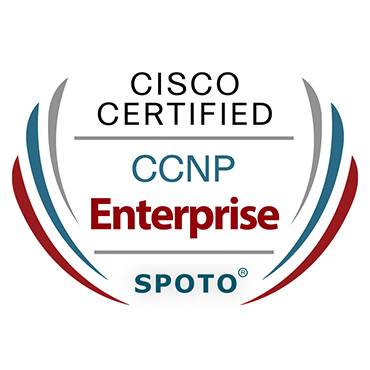
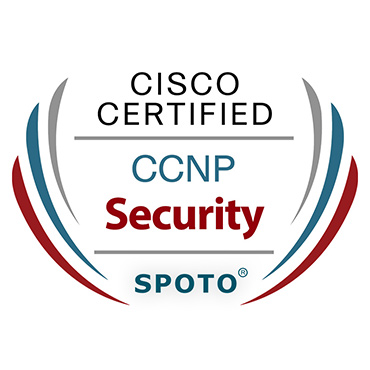

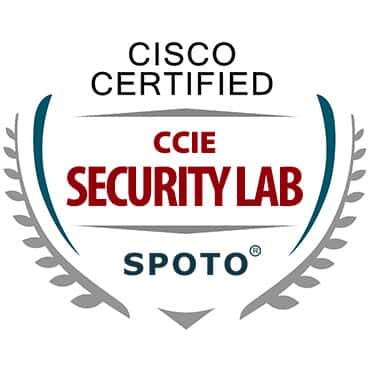
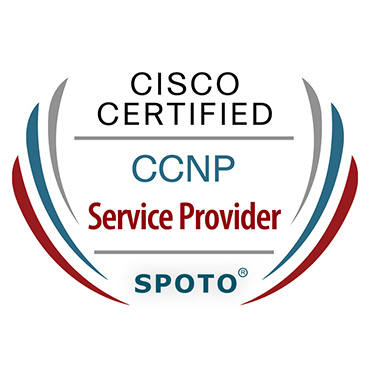

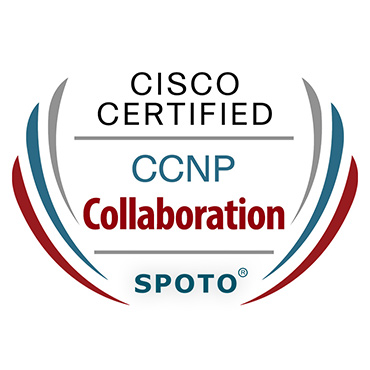
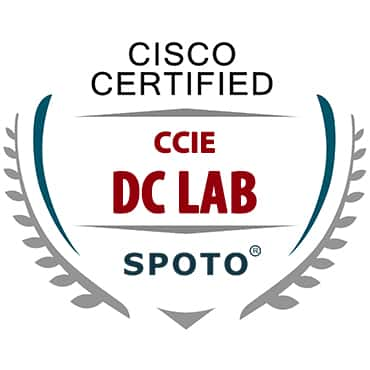



Comments